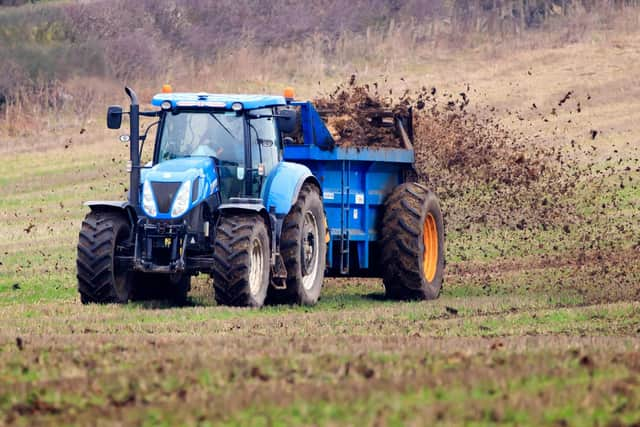Call for more transparency on fertiliser prices
The call for suppliers to come forward and publish fertiliser prices in order to give farm businesses maximum time to plan in 2023 was issued at yesterday’s Cereals event – where fears about the prices and availability of fertiliser for the 2023 season were centre stage.
Speaking at the event, English National Farmers Union (NFU) deputy president Tom Bradshaw said the complete lack of transparency in the fertiliser market was leaving growers with a lack of information that undermined their confidence to purchase inputs – a situation which he said would have serious impacts for the 2023 growing season:
Advertisement
Hide AdAdvertisement
Hide Ad“Over the past year, the fertiliser market has entered into a new era. Costs and supply face unprecedented risks and we need a visible, transparent market to allow producers, distributors and farmers alike to manage these threats in a commercially viable way,” said Bradshaw.


He said the NFU was also asking government and industry to come forward with a range of options that would enable the currently closed CF Fertiliser plant in the UK to reopen and start production. Bradshaw said it was very strange that fertiliser wasn’t being produced when gas prices appeared to be at a seasonal low.
“Nitrogen fertiliser supplies are reeling from geopolitical events that have upended the energy markets it is reliant on. As a result, there is likely going to be a lack of availability next year and we are urging suppliers to proactively come forward and publish fertiliser prices to give farm businesses maximum time to plan in 2023.
“It is a real possibility that nitrogen fertiliser is the limiting factor globally over the next 18 months which, alongside the crisis in the Ukraine, will restrict global crop production and deepen the humanitarian disaster.”
Bradshaw said that as the government finalised its national food strategy, it was absolutely critical that ministers recognised the importance of fertilisers and other inputs to a farm business and make those markets fit-for-purpose.
NFU crops board chair Matt Culley said that months of high prices, with nitrogen fertiliser currently costing three times as much as it did this time last year, were having a huge impact on arable growers across the country.
“When businesses are facing input costs that are already at least 50 per cent higher than last year, the financial risks associated with cropping decisions are also increased, and harder to manage.”
Growers, he said, were making tough decisions on what to plant this autumn, with many actively considering downsizing production or reducing the amount of fertiliser used – both of which could seriously impact productivity levels..
Advertisement
Hide AdAdvertisement
Hide Ad“All growers want their business to be as resilient as possible, especially when we work in such a volatile marketplace. Transparency is a key element to that but more progressive, independent advice to help growers drive nutrient use efficiency and make better use of manures and cover crops will help in this new world of fertiliser prices,” said Culley.
For a Scottish perspective on news, sport, business, lifestyle, food and drink and more from Scotland's national newspaper, go to www.scotsman.com
To subscribe go to www.scotsman.com/subscriptions
Comments
Want to join the conversation? Please or to comment on this article.